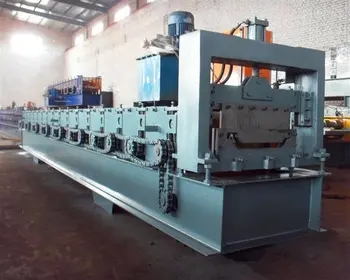
The Evolution and Importance of Stud and Track Forming Machines
In the realm of modern manufacturing and construction, the significance of precision engineering cannot be overstated. Among the myriad of machines that contribute to this field, stud and track forming machines have emerged as indispensable tools for creating metal components used in building structures and various industrial applications. This article delves into the evolution, functionality, and importance of stud and track forming machines in the contemporary manufacturing landscape.
What are Stud and Track Forming Machines?
Stud and track forming machines are specialized equipment designed to produce metal studs and tracks efficiently and accurately. These components are crucial in the construction of wall systems, ceilings, and other structural elements, especially in commercial and residential buildings. The machines work by taking a flat strip of metal—usually steel or aluminum—and transforming it into pre-defined shapes through a series of forming processes.
Evolution of Forming Technology
The technology behind stud and track forming machines has undergone significant advancements over the decades
. Initially, the forming processes were manual and labor-intensive, relying heavily on human skill and craftsmanship. With the advent of automation in the late 20th century, the manufacturing processes became faster, reducing labor costs while increasing precision and consistency in outputs.Modern stud and track forming machines are typically CNC (Computer Numerical Control) equipped, allowing for intricate designs, quick adjustments, and high-speed production runs. The integration of CAD (Computer-Aided Design) software allows engineers and manufacturers to produce complex shapes with minimal waste, optimizing resources and enhancing sustainability.
Functionality and Features

Stud and track forming machines are characterized by several features that improve their functionality. Key processes include roll forming, punching, and cutting, all of which can be executed with a high degree of accuracy and speed. Depending on the model, these machines can handle various gauges of metal and lengths, making them versatile tools suitable for a wide array of projects.
Many advanced models also come equipped with automatic feeding systems, which streamline production by reducing downtime. Additionally, user-friendly interfaces allow operators to monitor and control the machine's performance easily. With safety standards becoming increasingly stringent, contemporary machines are also designed with various safety features to protect operators during the manufacturing process.
Importance in the Construction Industry
The construction industry relies heavily on stud and track forming machines due to their efficiency and precision. The produced metal studs and tracks are lightweight yet durable, making them ideal for framing in both commercial and residential buildings. Furthermore, as the trend towards green building practices grows, the ability of these machines to produce recyclable materials aligns with the industry's shift towards sustainability.
Additionally, the speed at which these machines operate can significantly reduce construction timelines. This efficiency allows for quicker project completion, which is critical in a competitive market where timelines often dictate project success or failure.
Conclusion
Stud and track forming machines represent a vital component in the manufacturing and construction industries. Their evolution from manual tools to sophisticated automated systems demonstrates the broader trends in manufacturing towards increased efficiency, precision, and sustainability. As technology continues to advance, the capabilities of these machines are likely to expand, further solidifying their role as essential tools in modern construction practices. With the ever-growing demand for efficient building solutions, stud and track forming machines are set to remain a cornerstone of the industry.